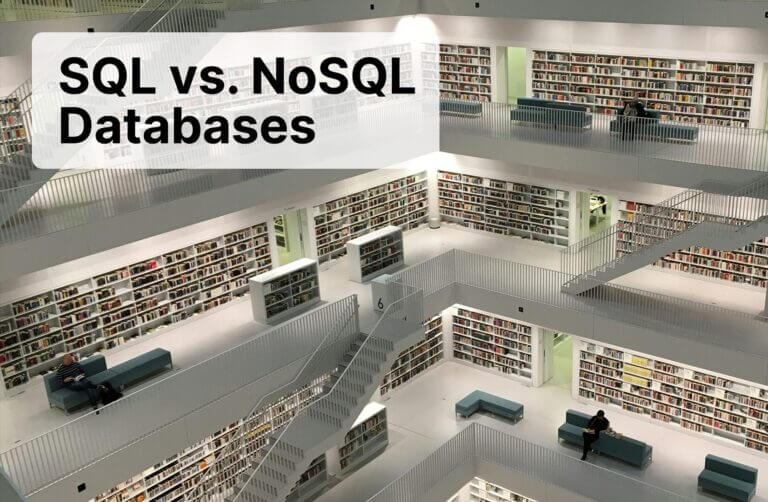If you’re searching for a database, you’ll probably come across several vendors, two of which are MongoDB and PostgreSQL. Although you might see the two database applications compared, their engines and design are very different. When choosing a database, you should decide based on the type of data you have and the way it must be retrieved.
We’ll go over some basic differences to help you decide which database application is right for you. Note that you could run both database applications internally and use them for different business requirements, but using the wrong database for particular applications can make them much more cumbersome and slow down system resources.
Relational vs. Document Engine
When you build a SQL database, you have primary and foreign keys set up to link records across tables. PostgreSQL is a relational database management system. Its primary purpose is to store relational data for web, mobile, geospatial, and analytics applications. It’s open source and usually chosen alongside other relational databases such as MySQL, but it works with object-based data rather than traditional table linking. For example, PostgreSQL supports table inheritance and function overloading that many traditional relational databases don’t support.
In contrast, MongoDB is a document engine used to store unstructured data. Instead of viewing data in tables, you view data as a JSON object. Suppose that you need to scrape the web for specific data, but that data doesn’t fit into a structured format. MongoDB will store a collection of data in the form of a document and provide developers with an identification value to retrieve the data later. The data can have disparate information without the need to place it in rule-based table columns like a relational database.
The main difference between a relational database such as PostgreSQL and a document-oriented database such as MongoDB is that you don’t need to know the structure of data in the latter option. You can collect and store data without any planning or table design. With relational databases, you need to design the table around the data structure, and any data that doesn’t fit the design can’t be stored. A relational database will reject data that doesn’t adhere to column design rules.
MongoDB vs. PostgreSQL: Syntax Differences
After you store data, you need a way to retrieve it. A relational database such as PostgreSQL uses the common SQL syntax. Since data is stored in structured table designs, you link data across tables using primary and foreign keys. You can link dozens of tables using primary and foreign keys, but every record is stored in a structured way with rules that define columns. Because data is structured, your SQL statement will have expected results based on the type of data in each table.
For example, a SQL statement that selects a car based on color would look like the following:
SELECT * from Car WHERE color=’red’
Because the NoSQL MongoDB database stores data differently, developers use different syntax to search for records. There are no tables to link, only documents. Documents are given an ID at the time that they’re stored, but developers don’t have table columns or keys to consider when creating queries.
A NoSQL MongoDB query to search for cars of a specific color would look as follows:
db.car.find( {color: “red”} )
Which Database Should You Choose: MongoDB or PostgreSQL?
You could potentially use either MongoDB or PostgreSQL for any development project that you must design and build. If not implemented correctly, both NoSQL and SQL databases could cause bottlenecks and hinder performance. To avoid issues, most developers use a specific database strategy depending on the front end that will call the database.
Because PostgreSQL is a traditional relational SQL database, it works well for basic applications where data is structured. For example, an e-commerce front end will work well with a SQL database such as PostgreSQL. Data can be stored using specific data types, and developers can define and categorize data. For an e-commerce store, product descriptions will always be a string of characters, and the price of a product is always a decimal number. The data is predictable and structured in a way that a PostgreSQL database can manage.
If you need analytics and don’t know the structure of data, a NoSQL database such as MongoDB is necessary. These databases can support petabytes of unstructured data and can be used in analytics and reporting. For example, suppose that you need to import and store data from web pages with various document structures so that you can predict future sales using machine learning. MongoDB will support unstructured data from HTML pages and provide the performance and analytic capabilities for your machine learning predictions. These predictions could be used in front-end reporting for sales and marketing to determine the products that will sell the best in coming years and the most effective price structure.
![]()






